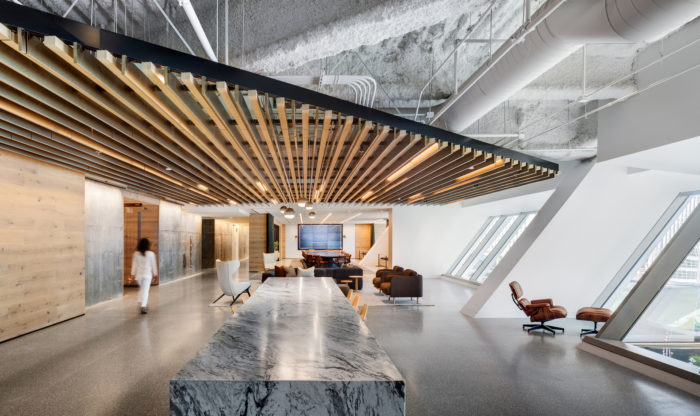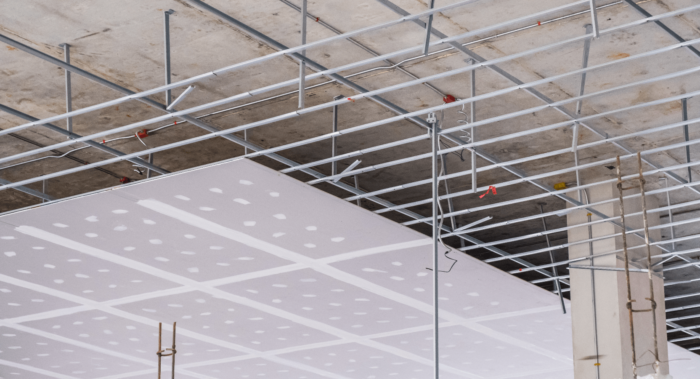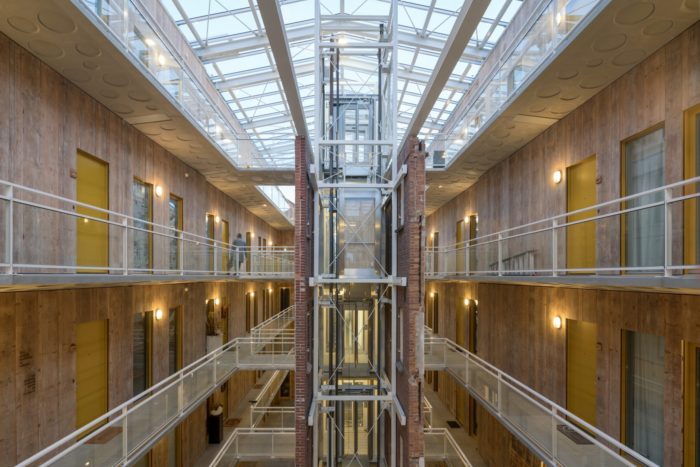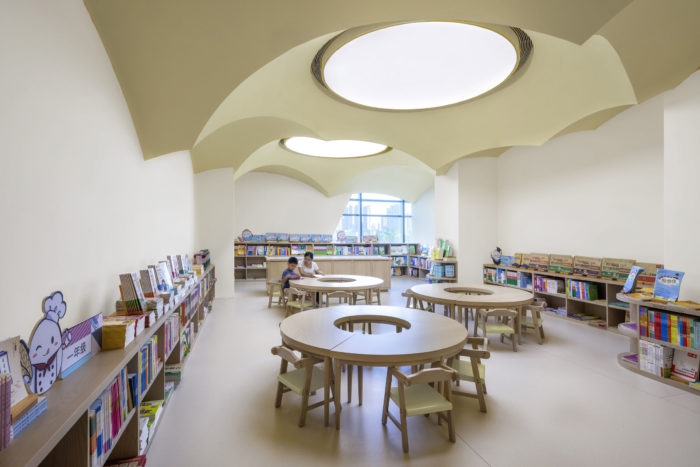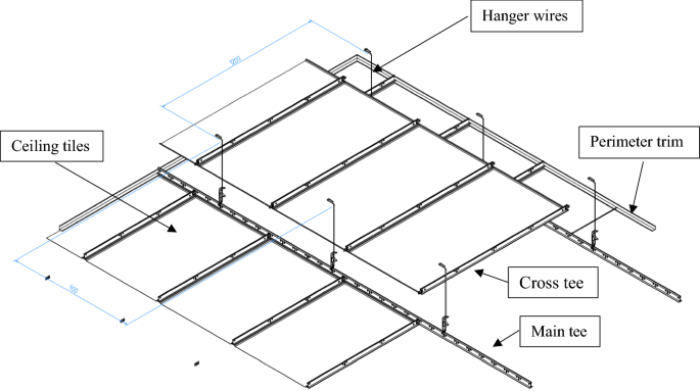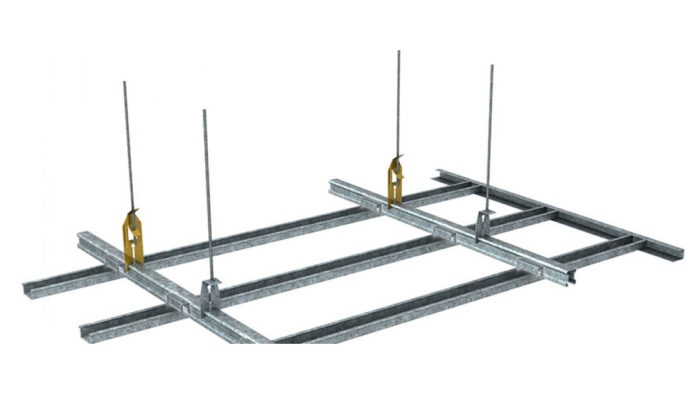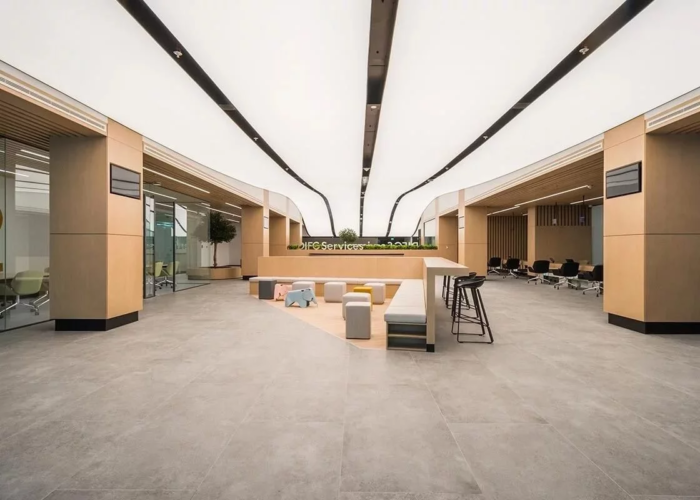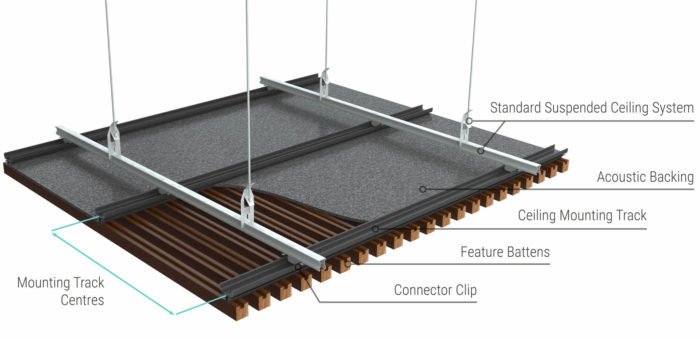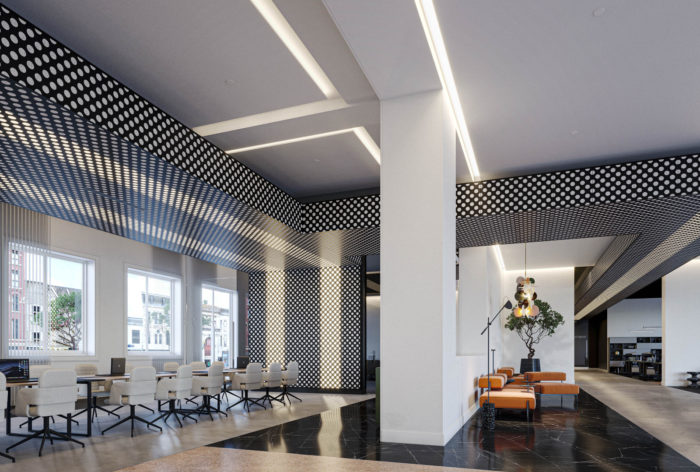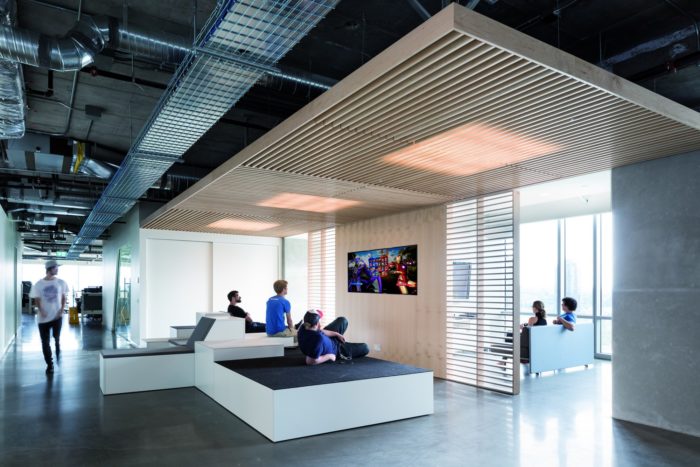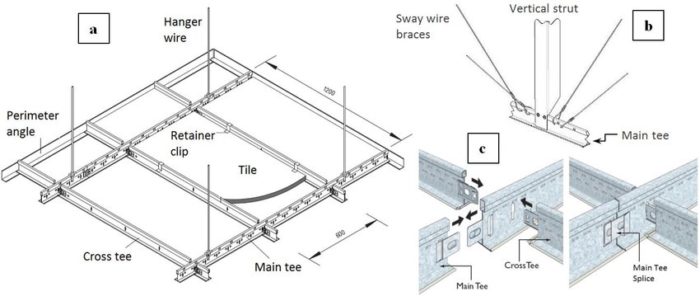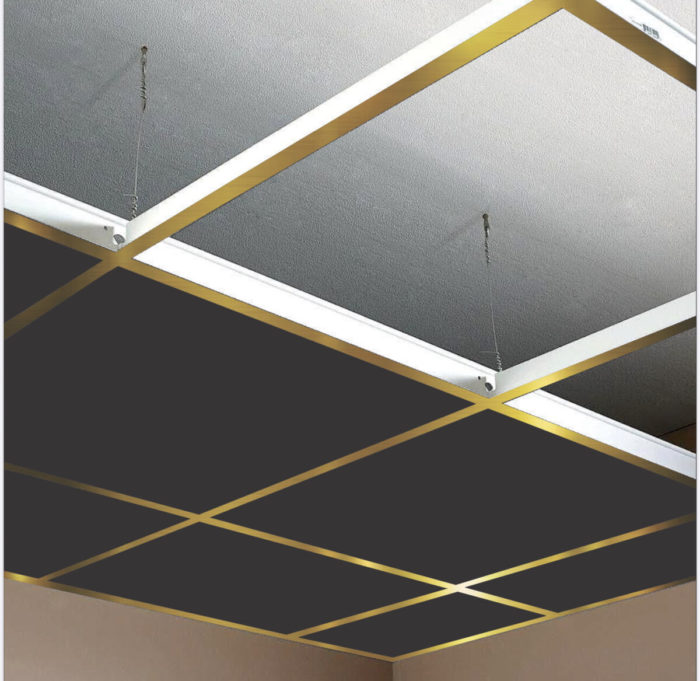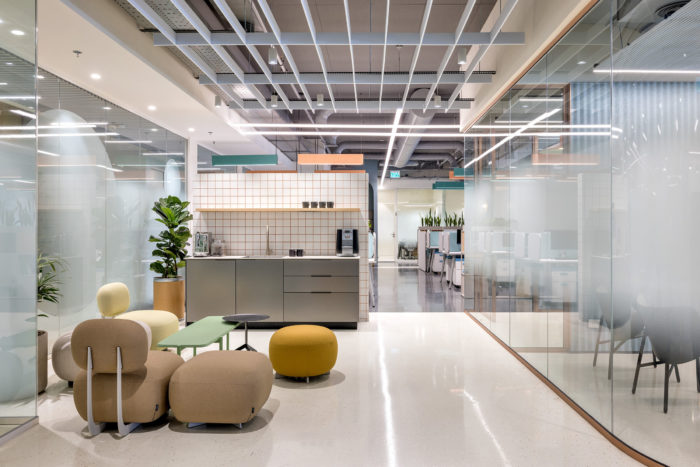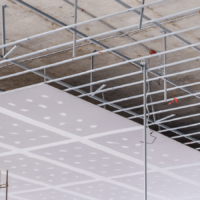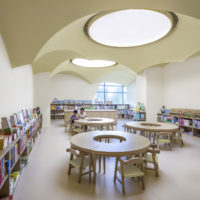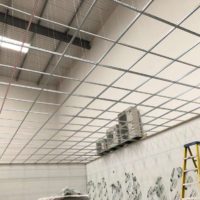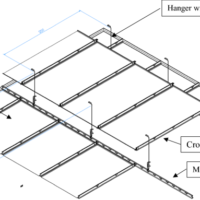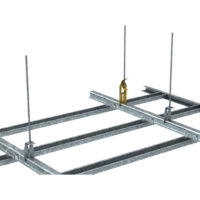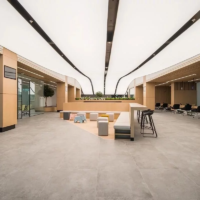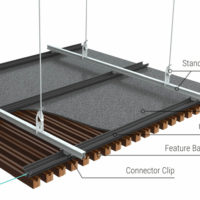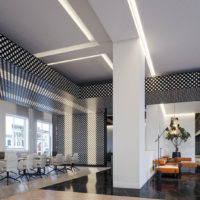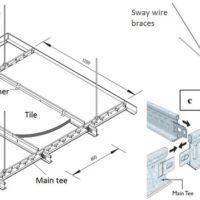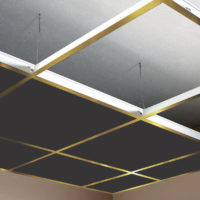When designing interiors, one often overlooked element that can make a significant difference is the ceiling. Suspended ceilings, also known as drop ceilings, are a modern solution that has gained popularity for their versatility and aesthetic appeal. This article will explore the world of suspended ceilings, their advantages, various design options, and why they are the go-to choice for creating stunning interiors.
What Are Suspended Ceilings?
Suspended ceilings, sometimes called drop ceilings, are secondary ceilings hung below the central ceiling of a room. They are typically constructed using a grid of metal channels or wires supporting ceiling tiles or panels. These tiles can be made from various materials, including mineral fiber, fiberglass, or metal. Suspended ceilings create a gap between the main and dropped ceiling, which can be used for multiple purposes, such as concealing wiring, ductwork, or plumbing.
Suspended Ceilings’ Advantages
A suspended ceiling offers numerous advantages, making it an attractive choice for residential and commercial interiors. Here are some of the key benefits:
- Aesthetic Appeal
One of the primary reasons for the popularity of suspended ceilings is their ability to enhance the overall aesthetics of a space. They provide a clean and finished look to a room while allowing creative design possibilities.
- Versatility in Design
A suspended ceiling comes in a wide range of designs and finishes, making it easy to find a style that complements your interior decor. Whether you prefer a classic, modern, or industrial look, you have a suspended ceiling option.
- Acoustic Control
A suspended ceiling offers excellent acoustic properties for spaces where noise control is essential. The tiles used in these ceilings can have acoustic insulation properties, helping to reduce sound transmission between rooms.
- Concealing Imperfections
A suspended ceiling can effectively hide imperfections in the main ceiling, such as cracks, stains, or uneven surfaces. This makes it an ideal choice for renovating older spaces without extensive repairs.
- Energy Efficiency
Incorporating suspended ceilings can contribute to improved energy efficiency. By creating a gap between the suspended and the main ceiling, you can install additional insulation, which helps regulate the room’s temperature.
- Easy Maintenance
Maintaining a suspended ceiling is relatively straightforward. Most tiles are easy to clean and can be replaced individually if damaged, eliminating the need for extensive repairs.
Design Options for Stunning Interiors
Suspended ceilings offer a world of design possibilities. Whether aiming for a sleek and contemporary look or a more traditional ambiance, a suspended ceiling style matches your vision. Let’s explore some of the design options:
1) Panel and Tile Systems
Suspended ceilings often consist of a series of interconnected panels that form the visible surface of the ceiling. A prevalent example is the ‘tee’ system, where long strips known as ‘mains’ are linked with shorter strips called ‘tees.’ These mains and tees create a grid filled with panels to construct the secondary ceiling. Gravity holds These panels in place and can be effortlessly removed by lifting them upwards and out of the framework.
2) Concealed Grid Systems
Concealed grid ceilings exude a more sophisticated aesthetic compared to standard panel systems. This variety of suspended ceilings utilizes the panels themselves, seamlessly fitting them together edge-to-edge to hide the underlying grid structure. These systems are engineered to conceal HVAC, lighting, and other infrastructure components while preserving their full functionality.
3) Stretch Ceiling Systems
A stretch ceiling is a suspended system comprising a single, expansive panel. The frame dictates the shape of the suspended ceiling, typically custom-designed and fabricated. This frame can snugly hug the room’s walls or take on a more artistic form, like a wave-shaped frame suspended below the ceiling. The stretched material is commonly a thin plastic film, such as vinyl or PVC, available in various colors, finishes, and transparencies. Alternatively, this surface could be a custom wooden veneer panel or decorative fabric.
4) Acoustic Ceilings
If noise control is a priority, consider an acoustic suspended ceiling. These ceilings are designed to absorb and reduce sound, making them ideal for offices, conference rooms, or even residential spaces where tranquility is appreciated.
5) Metallic Ceilings
Metallic suspended ceilings are a fantastic choice for a modern and industrial look. They can be made from aluminum or steel and come in various finishes, including brushed, polished, or perforated designs.
4. Wooden Ceilings
To add warmth and a touch of nature to your interior, wooden suspended ceilings are an excellent option. They bring a sense of elegance and can be stained or finished to match the desired aesthetic.
5) Bespoke Ceilings
If no standard systems meet your requirements, you can craft a custom ceiling tailored to your space’s unique demands.
Installing Suspended Ceilings
Installing suspended ceilings is a job best left to professionals, but understanding the basic process can be helpful:
- Planning: Determine the layout and design of your suspended ceiling, considering any lighting fixtures, vents, or other elements that need to be accommodated.
- Frame Installation: Install a metal frame or grid system using hanger wires and wall angles. This grid provides support for the ceiling tiles.
- Tile Installation: Place the ceiling tiles or panels into the grid. They should fit snugly and can be easily removed for maintenance or utility access.
- Lighting and Fixtures: If desired, install lighting fixtures, vents, or other accessories within the suspended ceiling grid.
- Finishing Touches: Once everything is in place, check for alignment and make necessary adjustments.
Maintenance Tips
To keep your suspended ceiling looking stunning for years to come, here are some maintenance tips to follow:
- Regularly dust or vacuum the ceiling tiles to prevent the buildup of dirt and dust.
- Address any stains promptly by cleaning or replacing affected tiles.
- Check for any signs of sagging or damage to the grid system and repair or replace components as needed.
- Ensure that any lighting fixtures or vents are in good working condition.
Final Thoughts
Suspended ceilings have come a long way from merely functional elements to integral interior design components. Their versatility, aesthetic appeal, and numerous advantages make them a modern solution for creating dazzling interiors. Whether you’re renovating an existing space or designing a new one, consider the endless possibilities suspended ceilings offer to elevate your interior to a new level of elegance and sophistication.
If you’re ready to transform your space and explore the world of suspended ceilings, don’t hesitate to consult with professionals who can help you choose the perfect design for your needs. With suspended ceilings, you’ll have a modern solution that not only enhances the aesthetics of your interior but also provides functional benefits that contribute to a comfortable and visually pleasing environment.
- Hyatt Global Headquarters l Gensler. © Rafael Gamo Studio LLC
- Courtesy of Building Materials
- BONELESS Concept Store l Supercloud Studio. © Guangzhou Elephant Vision
- Gouda Cheese Warehouse l Mei architects and planners ©Mei, Ossip van Duivenbode
- Kids Winshare 2.0 l PANORAMA. Image Courtesy of PANORAMA
- © Manor Interior Solutions
- © Springer Link
- Courtesy of Rondo Building Services
- © No Grey Area
- © Sculptform
- Capcom Vancouver l DIALOG. © Ema Peter Photography
- © Arktura
- © ResearchGate
- Colmobil Group l Marina Rechter – ReMa architects. © Uzi Porat
- Courtesy of eBay


